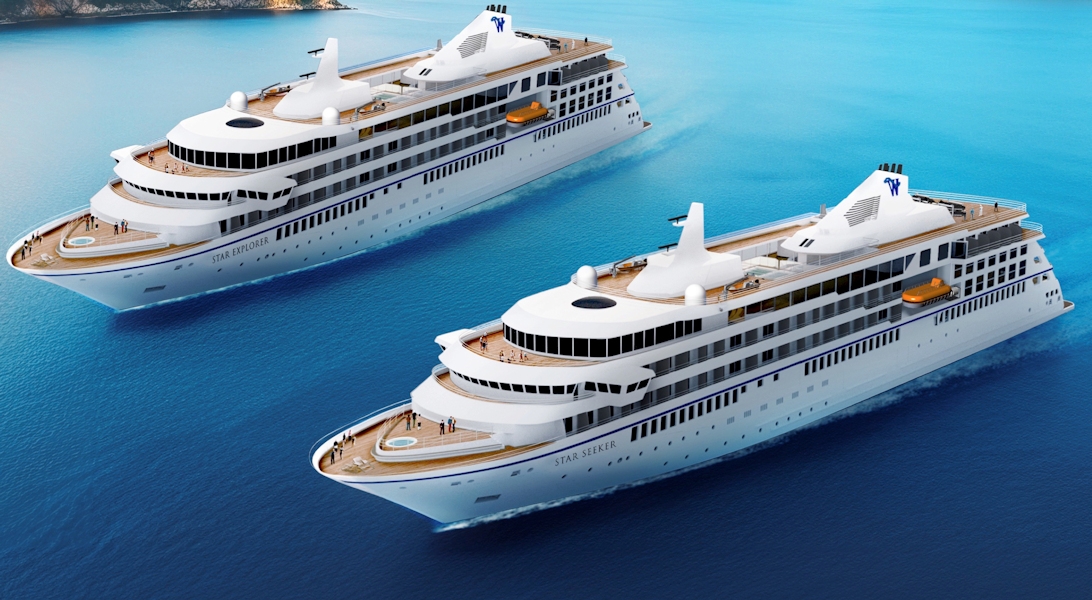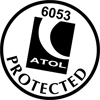| | | | | Arrive | Depart |
| 15th15 | JanJan | 202626 | Miami, Florida, United States, embark on the Star Seeker | | 22:00 |
Miami is one of the world’s most popular holiday spots. It has so much to offer; from its countless beach areas, to culture and museums, from spa and shopping days out, to endless cuban restaurants and cafes. Miami is a multicultural city that has something to offer to everyone. With an average temperature of a pleasant 76°, there seems to be something for everyone in Miami. South Beach's trendy nightlife, the charm of the Art Deco district, the calypso energy of Little Havana, the busy Calle Ocho area, the luxury of Miami Beach and the Coral Gables, the variety of shopping in Coconut Grove and the sports lures of deep-sea fishing, golf, boating, and tennis - only the beginning of the delights to be found here. |
| 16th16 | JanJan | 202626 | At Sea | | |
| 17th17 | JanJan | 202626 | At Sea | | |
| 18th18 | JanJan | 202626 | Puerto Plata, Dominican Republic | 08:00 | 18:00 |
San Felipe de Puerto Plata is the capital of the Puerto Plata province on the Dominican Republic’s Atlantic north coast. The city is best known for its beaches. Playa Dorada’s lengthy beachfront is backed by resorts and an 18-hole golf course. The city’s old colonial-era center is dominated by the 16th-century Fortaleza San Felipe, a Spanish fortress that now houses historical and military artifacts. Puerto Plata, Dominican Republic, is a vibrant city on the northern coast known for its rich history, stunning beaches, and lush landscapes. Visitors can ride the only cable car in the Caribbean to the top of Pico Isabel de Torres for breathtaking views and explore the botanical gardens. The city is also home to the historic Fort San Felipe, a 16th-century fortress offering a glimpse into the region's colonial past. The Amber Museum showcases exquisite Dominican amber, while the bustling Malecón, a seaside promenade, is perfect for enjoying local cuisine, shopping, and the lively culture of Puerto Plata. |
| 19th19 | JanJan | 202626 | Samaná, Dominican Republic | 07:00 | 16:00 |
Samaná (pronounced sah-mah-NAH) is a dramatically beautiful peninsula, like an island unto itself, of coconut trees stretching into the sea. It's something of a microcosm of the Dominican Republic: here you'll see poverty and fancy resorts, brand-new highways as well as bad roads, verdant mountainsides, tropical forests, tiny villages lined with street-side fruit vendors, secluded beaches, and the radiant warmth of the Dominican people. Samaná is the name of both the peninsula and its biggest town, as well as the bay to the south. It's worth noting that to locals, Samaná denotes only the largest town, Santa Bárbara de Samaná, which makes a great departure point for whale-watching or an excursion to Los Haitises Park across the bay. The bay is home to some of the world's best whale-watching from mid-January to late March. It is now the site of Puerto Bahia Marina and Residences and the Bannister Hotel, contemporary, luxurious yet moderately priced. This complex has brought an entirely new level of tourism to this area, and given yachts a full-service facility in what has always been a desirable cruising destination.A visit here is really about two things: exploring the preserved natural wonders and relaxing at a small beachfront hotel. The latter is most readily accomplished in Las Terrenas, the only true tourist center, where you can find picturesque restaurants, accommodations of all types (including the new oceanfront Sublime Samaná and the luxury condo-hotel, Balcones del Atlantico), and great beaches. At Las Terrenas you can enjoy peaceful playas, take advantage of the vibrant nightlife, and make all your plans for expeditions on the peninsula. The other pleasures are solitary—quiet beaches, the massive national park Los Haitises, and water sports and hiking. A relatively new toll road connects Santo Domingo to the peninsula; it's about a 2- to 2½-hour drive. Small El Catey International Airport is near Las Terrenas and is now being served by twice-weekly JetBlue flights (Wednesday and Saturday). On the Dominican Republic's Samaná Peninsula, the green mountains teem with coconut trees and dramatic vistas of the ocean. The area is full of hidden beaches reachable only on foot or by sea, protected coves, and undeveloped bays. A visit to Samaná is really about two things: exploring its preserved natural wonders and relaxing on the beach. There are a number of all-inclusive resorts where you can hang your hat, quaint and low-key beachfront hotels, as well as new world-class properties, where you can find complete relaxation and tranquillity. Lovely Samana is an environmental treasure. Untamed, with plenty of coves, bays, mountains, waterfalls and diverse geography zones where nature abounds. The protected natural area known as Los Haitises National Park is home to two endemic mammal species, the Hispaniolan hutia and the Hispaniolan solenodon along with numerous birds including the brown pelican, frigate birds, barn owls, stygian owls and Hispaniolan amazons. Its beaches are famous for body-boarding and wading. |
| 20th20 | JanJan | 202626 | Great Harbour, Jost Van Dyke, British Virgin Islands | 13:00 | 22:00 |
Jost Van Dyke, four miles long, is truly known as the 'barefoot island'. The smallest of the British Virgin Islands, it is known as a popular destination for yachts and is celebrated for its casual lifestyle, protected anchorages, fine beaches and beachfront restaurants and bars. The island has fewer than 200 inhabitants and they are widely known as a welcoming people. The island's name conjures up its rich, colorful past. Jost Van Dyke is said to have been named for an early Dutch settler, a former pirate. At Great Harbour, Little Harbour, and White Bay there are safe, protected bays and pristine beaches shaded with coconut palms and seagrape trees. Discover inviting shops selling local treasures, restaurants, and bars. 'The Painkiller', one of the Caribbean’s most popular drinks, originated at the Soggy Dollar Bar. Foxy’s and Gertrude's in White Bay are renowned for drinks made with the island's famous rum, frosty beers, and tales of pirates and sunken treasure. Explore Jost Van Dyke's history in the vegetation-covered ruins of centuries-old sugar mills, or on the old trails that crisscross the island. Revel in the natural beauty of the pristine, untouched beaches. Hike up to the highest spot on the island, Majohnny Point, and take in a stunning 360 degree view of the Caribbean. Relax in the natural 'bubble pool', a popular tourist attraction. Jost Van Dyke conjures up images of what the British Virgin Islands may have looked like many years ago. For an island comprised of a mere eight square miles, it's amazing how much there is to do on Jost Van Dyke. Visit the national park on nearby Diamond Cay, snorkel among swaying sponges and angelfish at Sandy Spit, or pilot your own boat around Sir Francis Drake Waterway. After all that, you'll be ready for an evening drink on the beach — where you can admire your Windstar ship aglow in the harbor. |
| 21st21 | JanJan | 202626 | At Sea | | |
| 22nd22 | JanJan | 202626 | Sopers Hole, Tortola, British Virgin Islands | 08:00 | 17:00 |
| Arrive at the boardwalk of Pusser's Landing and mingle with other yachtsmen in the utterly charming marina at Soper's Hole. Find a deserted stretch of beach to kick back and ponder this tiny port's rich heritage of romance, pirates, and adventure. An evening departure features a once-in-a-lifetime romantic sunset Sail Away. |
| 23rd23 | JanJan | 202626 | San Juan (Puerto Rico), Puerto Rico, disembark the Star Seeker | 07:00 | |
If you associate Puerto Rico's capital with the colonial streets of Old San Juan, then you know only part of the picture. San Juan is a major metropolis, radiating out from the bay on the Atlantic Ocean that was discovered by Juan Ponce de León. More than a third of the island's nearly 4 million citizens proudly call themselves sanjuaneros. The city may be rooted in the past, but it has its eye on the future. Locals go about their business surrounded by colonial architecture and towering modern structures.By 1508 the explorer Juan Ponce de León had established a colony in an area now known as Caparra, southeast of present-day San Juan. He later moved the settlement north to a more hospitable peninsular location. In 1521, after he became the first colonial governor, Ponce de León switched the name of the island—which was then called San Juan Bautista in honor of St. John the Baptist—with that of the settlement of Puerto Rico ("rich port").Defended by the imposing Castillo San Felipe del Morro (El Morro) and Castillo San Cristóbal, Puerto Rico's administrative and population center remained firmly in Spain's hands until 1898, when it came under U.S. control after the Spanish-American War. Centuries of Spanish rule left an indelible imprint on the city, particularly in the walled area now known as Old San Juan. The area is filled with cobblestone streets and brightly painted, colonial-era structures, and its fortifications have been designated a UNESCO World Heritage Site.Old San Juan is a monument to the past, but most of the rest of the city is planted firmly in the 21st century and draws migrants island-wide and from farther afield to jobs in its businesses and industries. The city captivates residents and visitors alike with its vibrant lifestyle as well as its balmy beaches, pulsing nightclubs, globe-spanning restaurants, and world-class museums. Once you set foot in this city, you may never want to leave. The imposing façade of El Morro fortress is just one of the many UNESCO World Heritage Sites in San Juan. Admire the colorful colonial buildings from your casually elegant ship, docked right in the heart of Old San Juan. |

